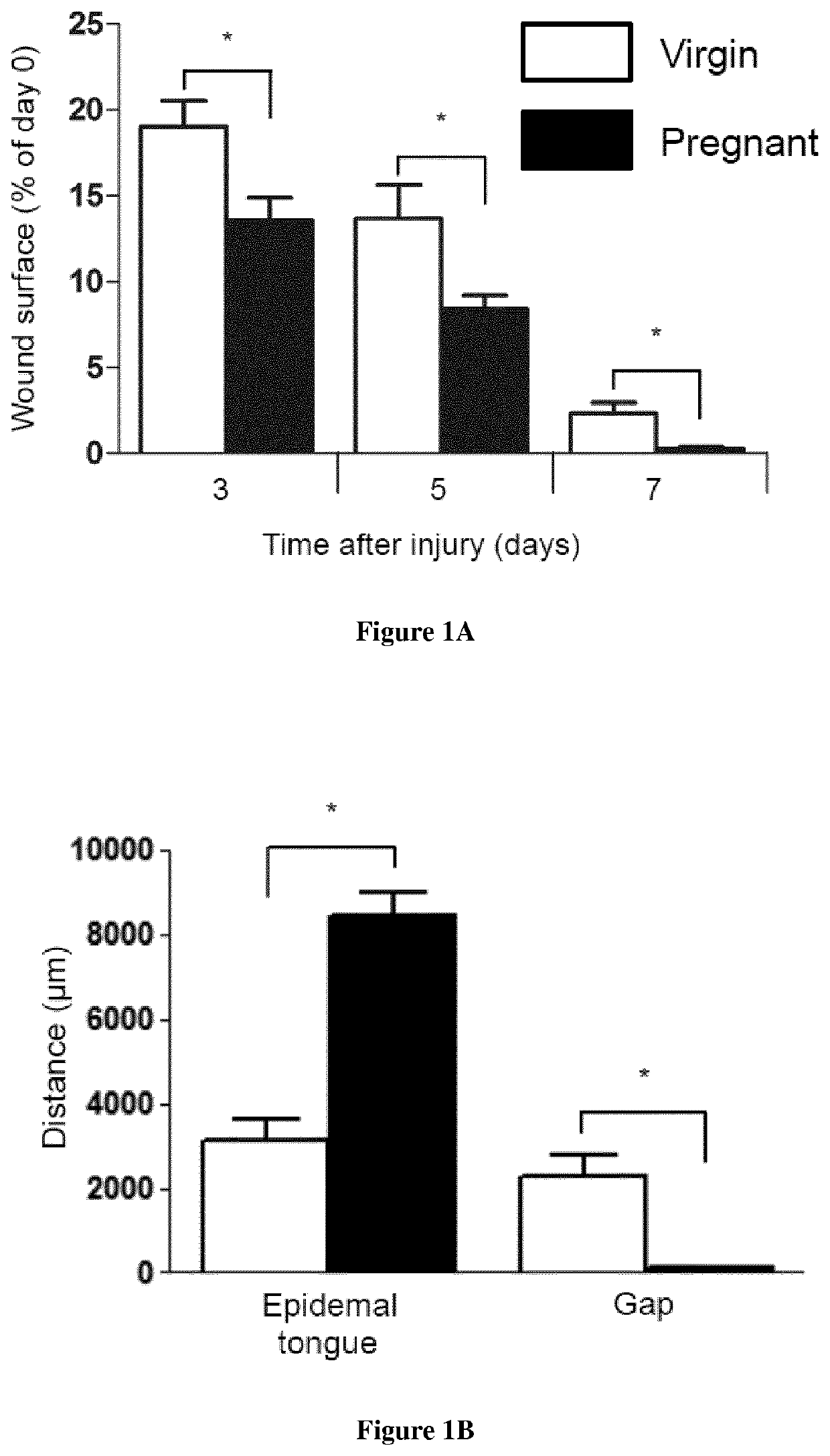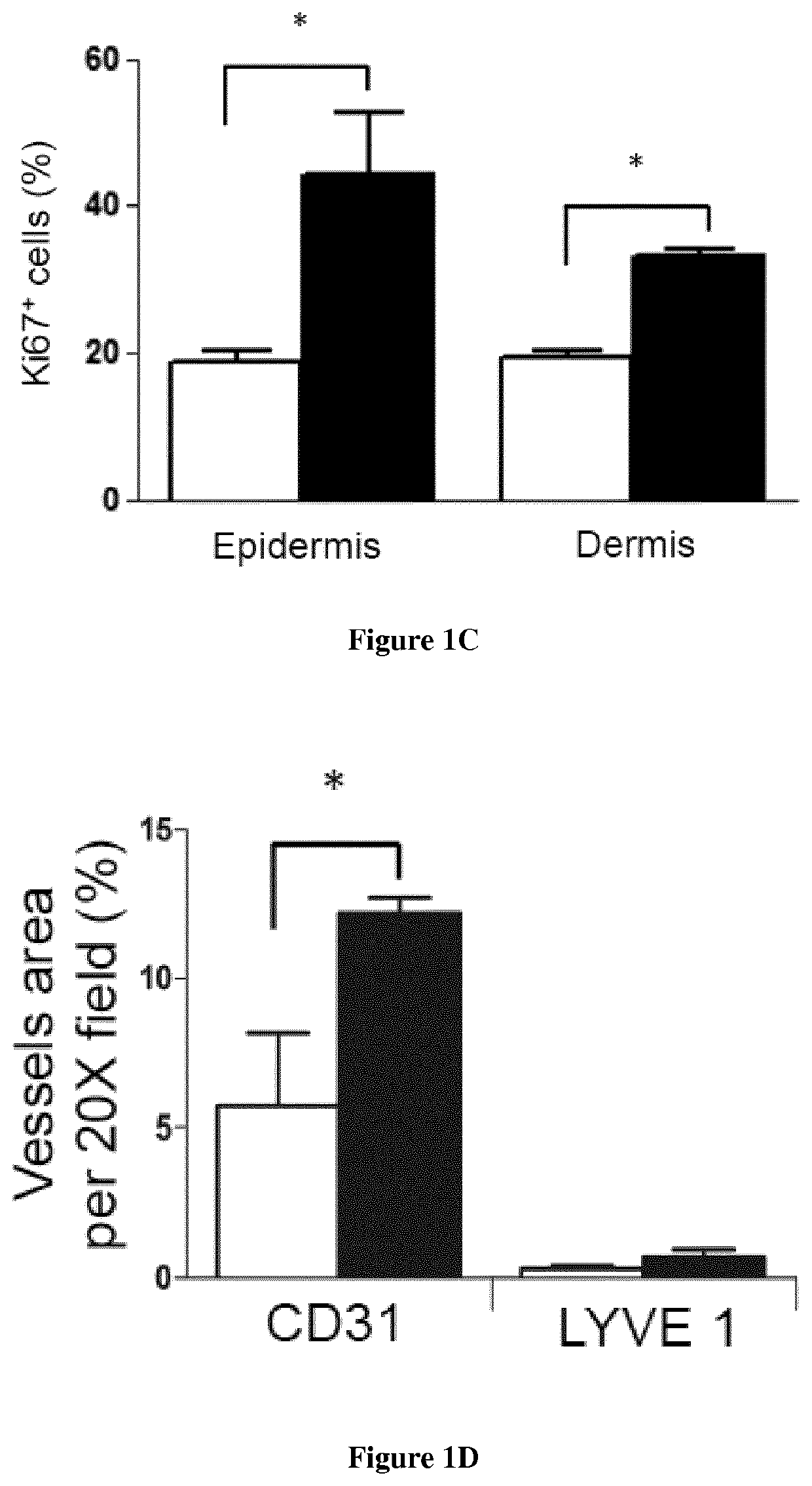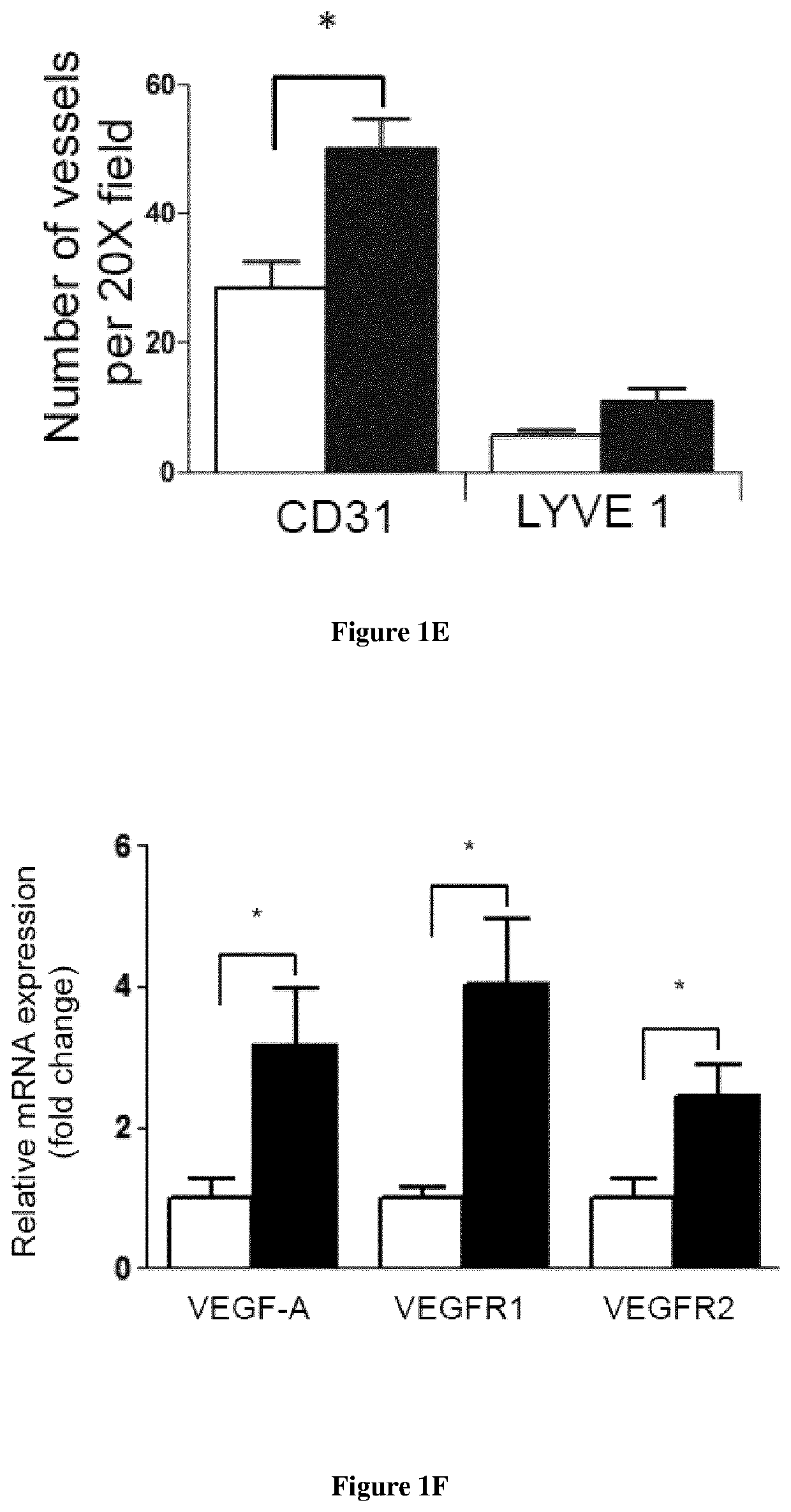Methods and pharmaceutical compositions for the treatment of tissue lesions
- Summary
- Abstract
- Description
- Claims
- Application Information
AI Technical Summary
Benefits of technology
Problems solved by technology
Method used
Image
Examples
example 1
[0089]Material & Methods
[0090]Mice: Male enhanced green fluorescence protein (eGFP) transgenic mice were obtained from Riken Laboratories (CD57BL / 6-Tg (CAG-EGFP)lObs / J) and mated to Wild-type (WT) females on background C57BL / 6 of 6-8 weeks old obtained from Harlan (Harlan). All mice care were in compliance with ethical rules of Université Pierre et Marie Curie (UPMC) animal care regulations.
[0091]Flow cytometry: Back skin was shaved and wounds were harvested, incubated overnight at 4° C. in 0.05% trypsin-EDTA (Invitrogen) for mechanical separation of the epidermis. The tissue were digested in Collagenase IV for 60 min at 37° C., vortexed every 10 min and filtered using a 100 μm cell strainer, followed by 40 μm cell strainer (BD Pharmingen) to obtain a single cell suspension. Blood were draw from the heart of the mice and the peripheral mononuclear blood cells were separated from erythrocytes and platelets using Ficoll 1.088 method (Health Care). After collected the ring, the cells s...
example 2
[0133]Results
The Mobilization of FMCs to Maternal Tissues Through Ccl2 is Mediated by Ccr2 Receptor on Fetal Cells
[0134]Once we showed that Ccl2 was able to recruit FMCs to injected maternal tissue, it was important to demonstrate whether the fetal cell signaling was dependent on Ccr2. To answer this question, we analyzed virgin female Ccr2KO / KO mice, female Ccr2KO / KO mice mated with eGFP+ males and female Ccr2KO / KO mice mated with eGFPKI Ccr2KO males (FIG. 7a,b). When Ccr2KO / KO female mice bear Ccr2KO / KO fetuses, the Ccl2 injections do not modify wound healing at any day (FIG. 7b). In contrast, when Ccr2KO / KO female mice bear Ccr2WT / KO fetuses, Ccl2 decreases wounded area by 49.08, 28.96 and 57.58% at days 2, 5 and 7 respectively (FIG. 7c). Interestingly, this ratio is similar to the ratio we found with Ccl2 in WT mice. In addition, only Ccr2KO / KO mice bearing Ccr2WT / KO fetuses displayed an increase in fetal cell infiltrate in granulation tissue upon Ccl2 local injections (FIG. 7d)...
PUM
| Property | Measurement | Unit |
|---|---|---|
| Composition | aaaaa | aaaaa |
Abstract
Description
Claims
Application Information
 Login to View More
Login to View More - R&D
- Intellectual Property
- Life Sciences
- Materials
- Tech Scout
- Unparalleled Data Quality
- Higher Quality Content
- 60% Fewer Hallucinations
Browse by: Latest US Patents, China's latest patents, Technical Efficacy Thesaurus, Application Domain, Technology Topic, Popular Technical Reports.
© 2025 PatSnap. All rights reserved.Legal|Privacy policy|Modern Slavery Act Transparency Statement|Sitemap|About US| Contact US: help@patsnap.com



